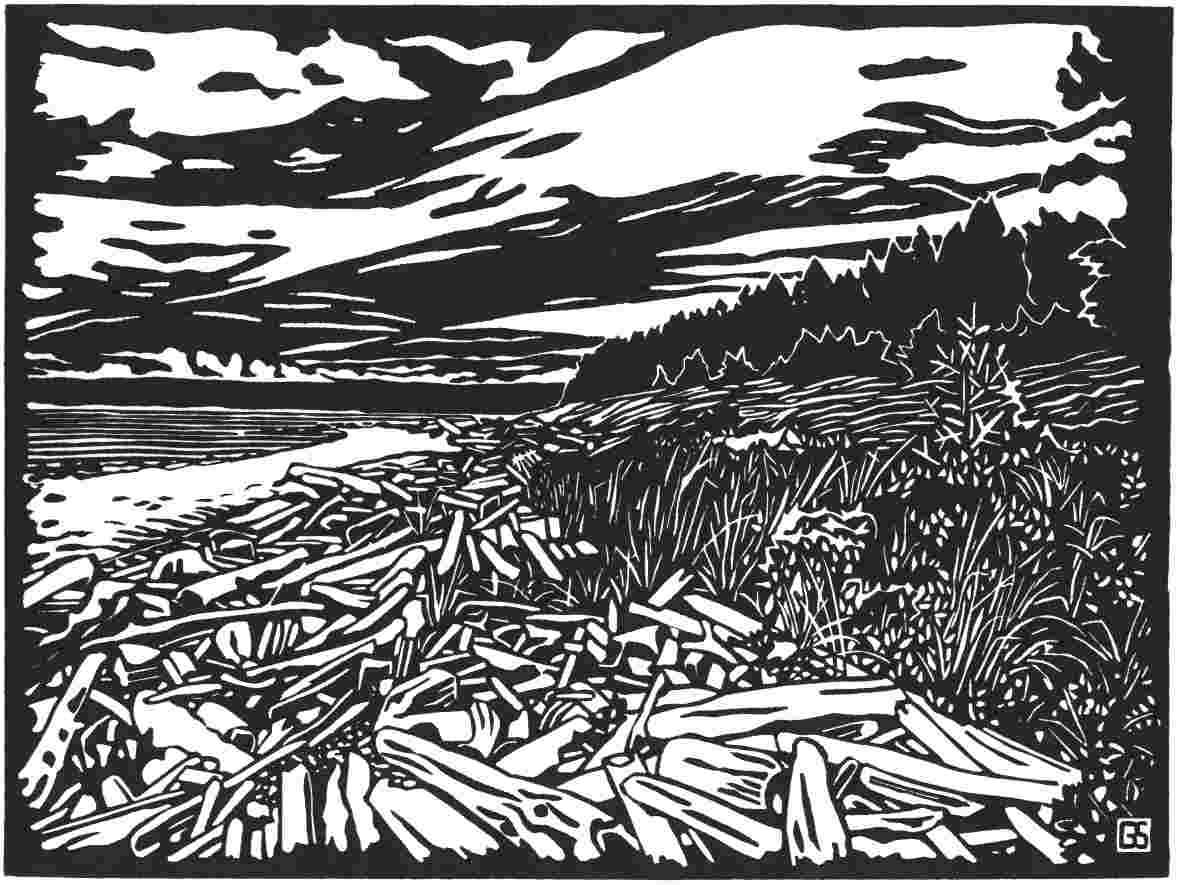
South Shore, Gary Sim linocut
| BRITISH COLUMBIA ARTISTS |

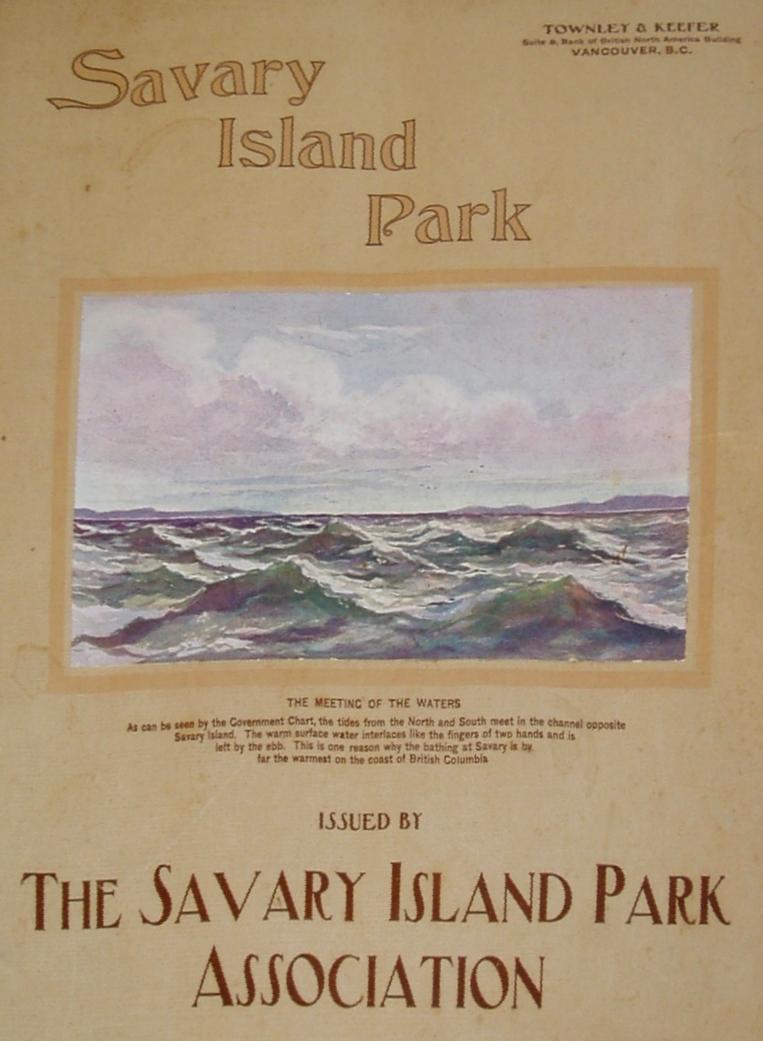
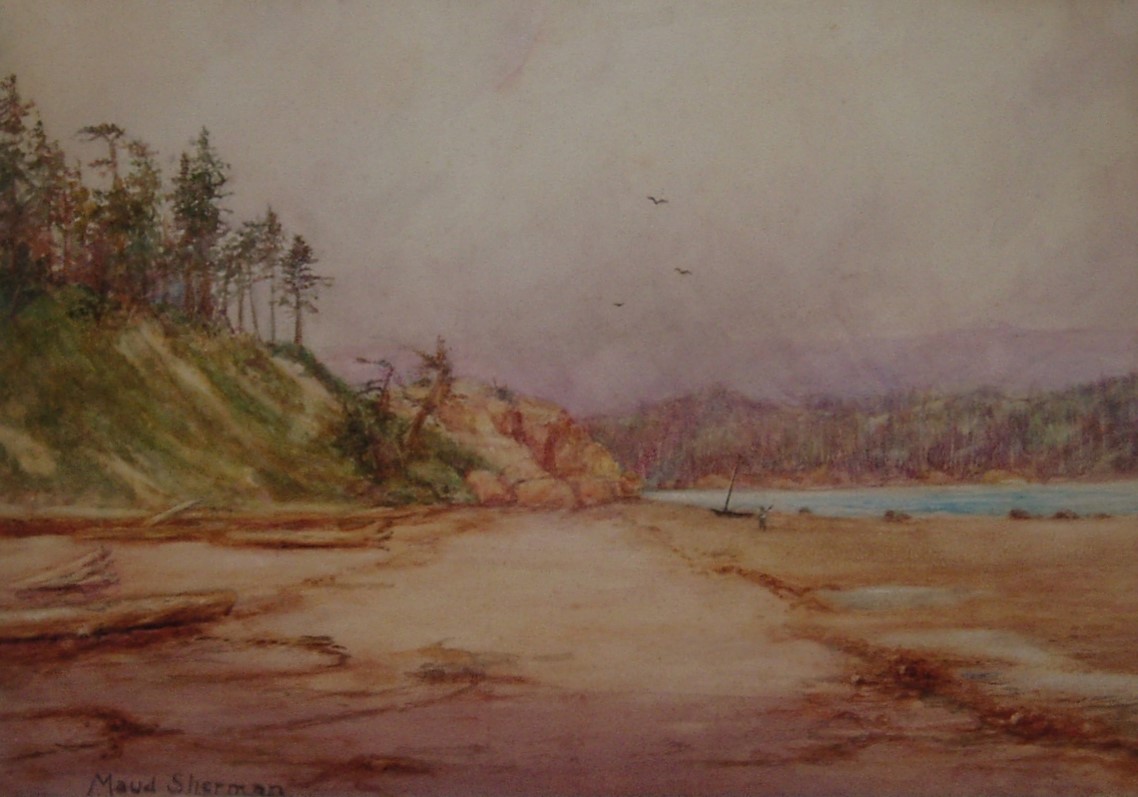
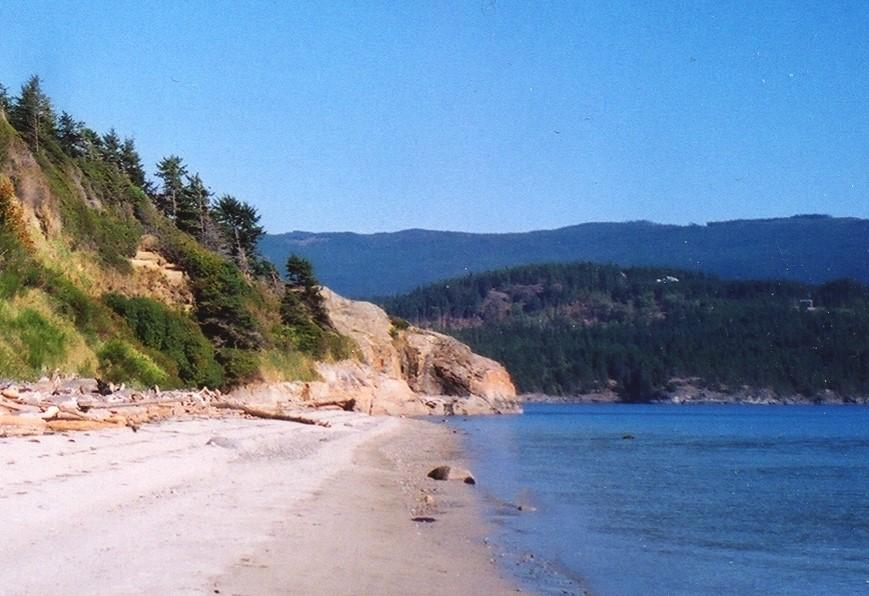
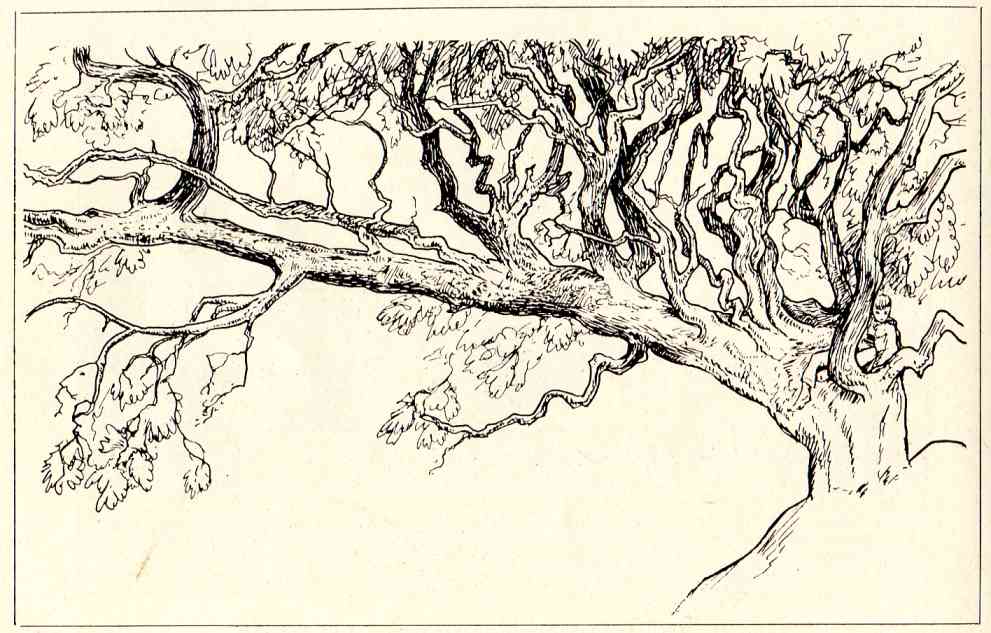
It used to be far easier to get to Savary Island than it is now. Until the Union Steamship Company ceased operations in the 1950s, you could board one of their ships in Vancouver, lounge on deck or in cabins, between frequent meals served by waiters, and arrive refreshed at the Government wharf located towards the east end of the north shore of Savary Island. People, baggage, and freight would be unloaded and loaded in a hubbub of activity, until the steamship cast off and backed away from the wharf. As the ship slowly moved away, the new arrivals on the island would begin to carry their possessions off the wharf and towards their dwellings, and the silence of an off-shore West Coast island would descend.
The Spanish were perhaps the first Europeans to see Savary Island. In 1791 an expedition of two ships led by Francisco de Eliza reached a point in the Inside Passage just north of Texada Island. It was the northern-most point of exploration in the Inside Passage by Europeans to that date, and the furthest north that that expedition would travel. They drew a map of the voyage map showed an island at the very north end of the sheet, beyond Texada Island but not looking like Harwood, in the correct location and orientation to be Savary Island. That map, believed to have been drawn by the Spaniard Jose Maria Narvaez, was copied a number of times, and used by two expeditions the following year: those of Captain George Vancouver and of Captains Galiano and Valdes, who together and separately used the map as a guide to their explorations of the Inside Passage in 1792.
On that voyage they went beyond the previous extent of European exploration, and discovered, among other things in the area, Savary Island, Captain Vancouver giving the island its current name in passing. The island was also sketched for the first time, if only in plan view on a nautical chart. Galiano and Valdes continued northward, becoming the first Europeans known to have circumnavigated Vancouver Island - thus becoming the first to know for certain that Vancouver Island was indeed an island.
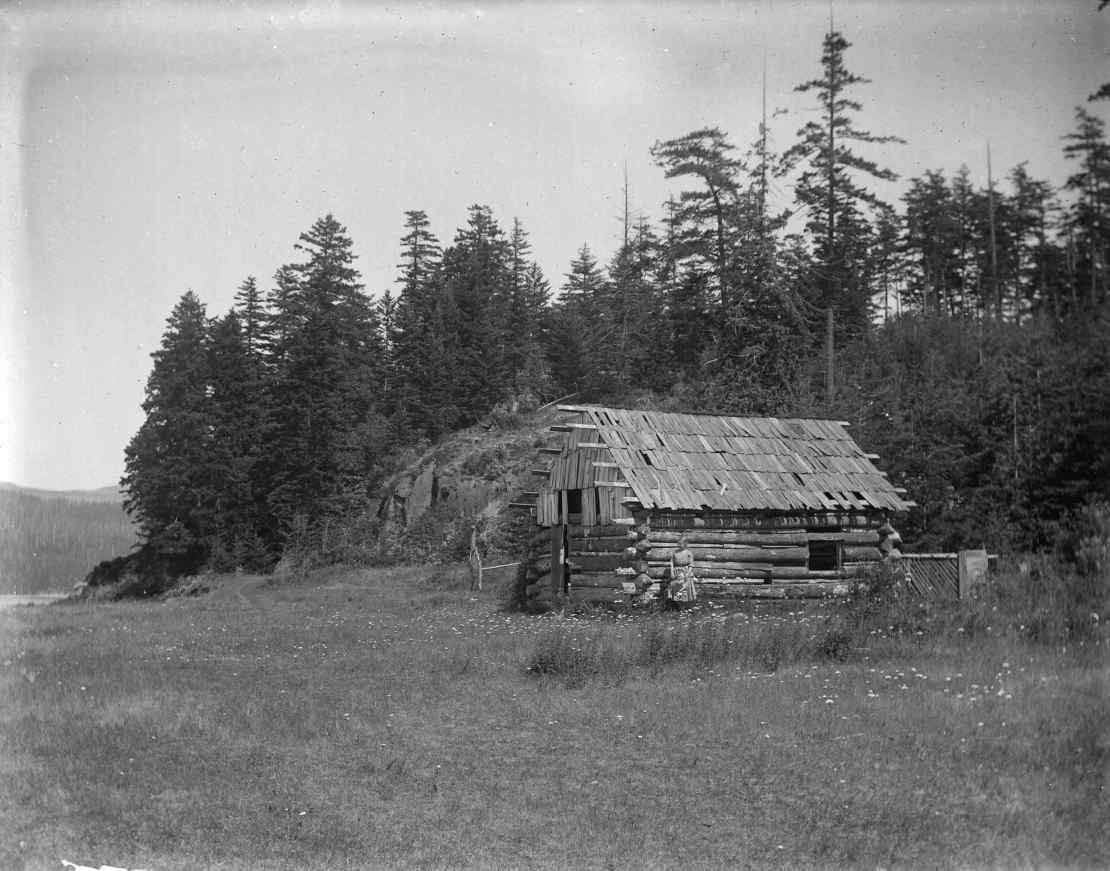
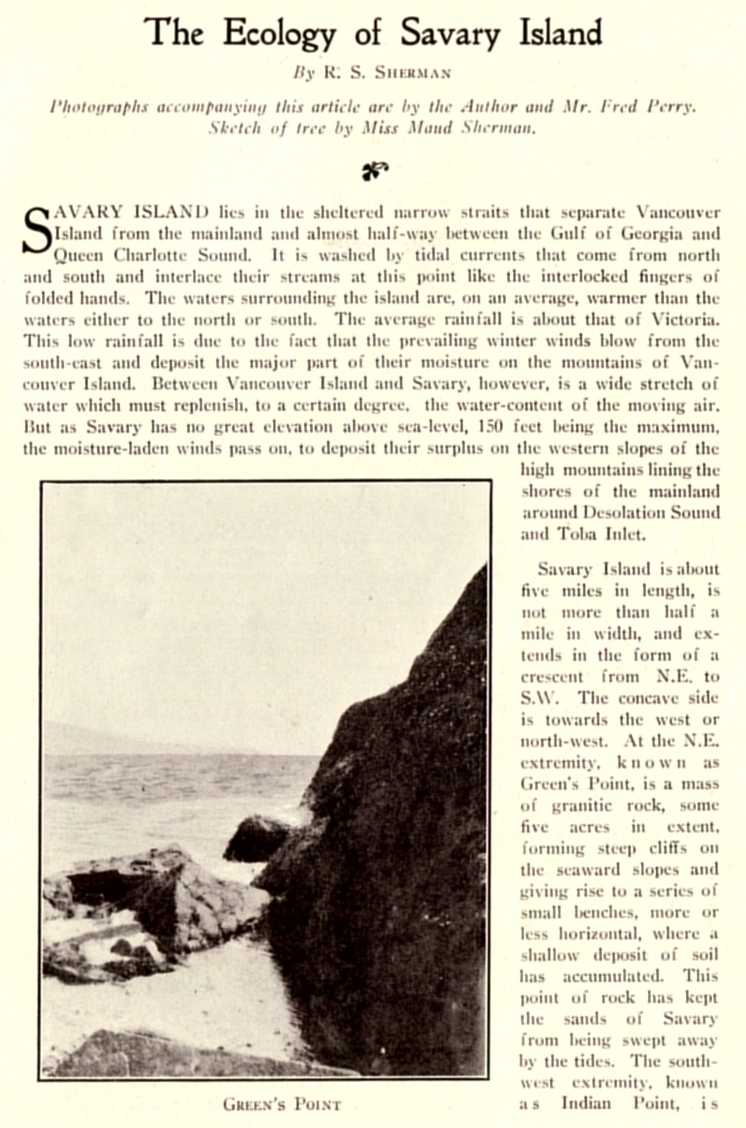
He returned to the island between 1900 and 1910, vacationing with members of his family. His daughter Maud Sherman, first visited the island in 1908 when she was eight. R.S. Sherman became a director of a company that purchased and subdivided the island. The Shermans bought lots, and also interested their relatives and neighbours in buying lots. One of the roads on the island is named Sherman Walk after the family. R.S. Sherman became the island's first Postmaster, although he apparently never actually fulfilled the position on the island, instead appointing Harry Keefer as the Assistant Postmaster. Harry's daughter Frances ("Frankie") became an artist and painted many early watercolours of the island, possibly inspired by her good friend Maud Sherman.
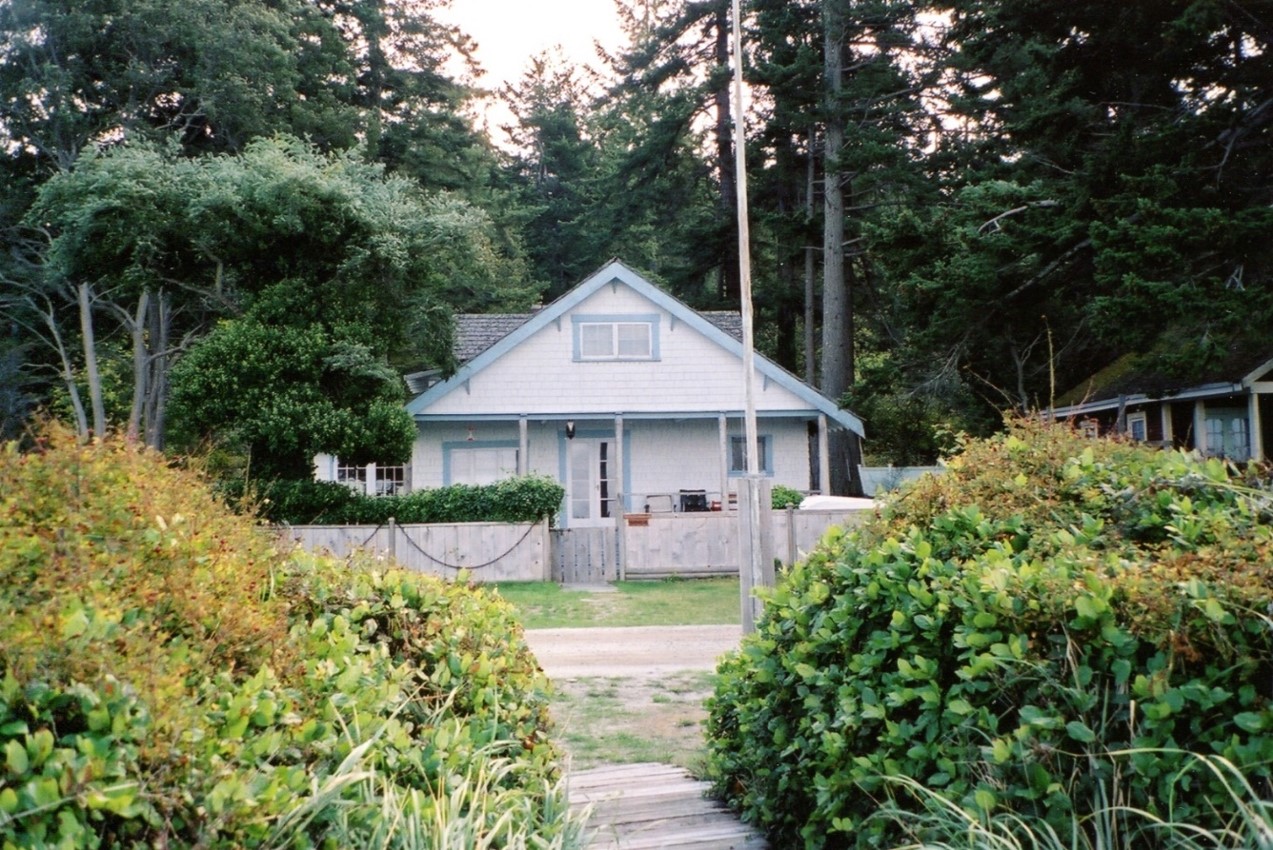
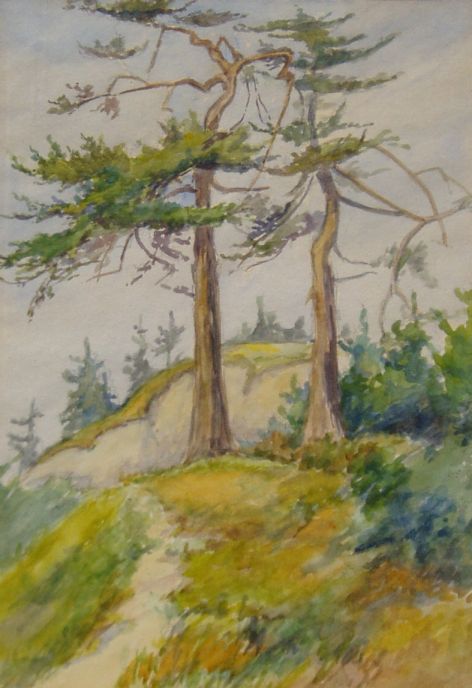
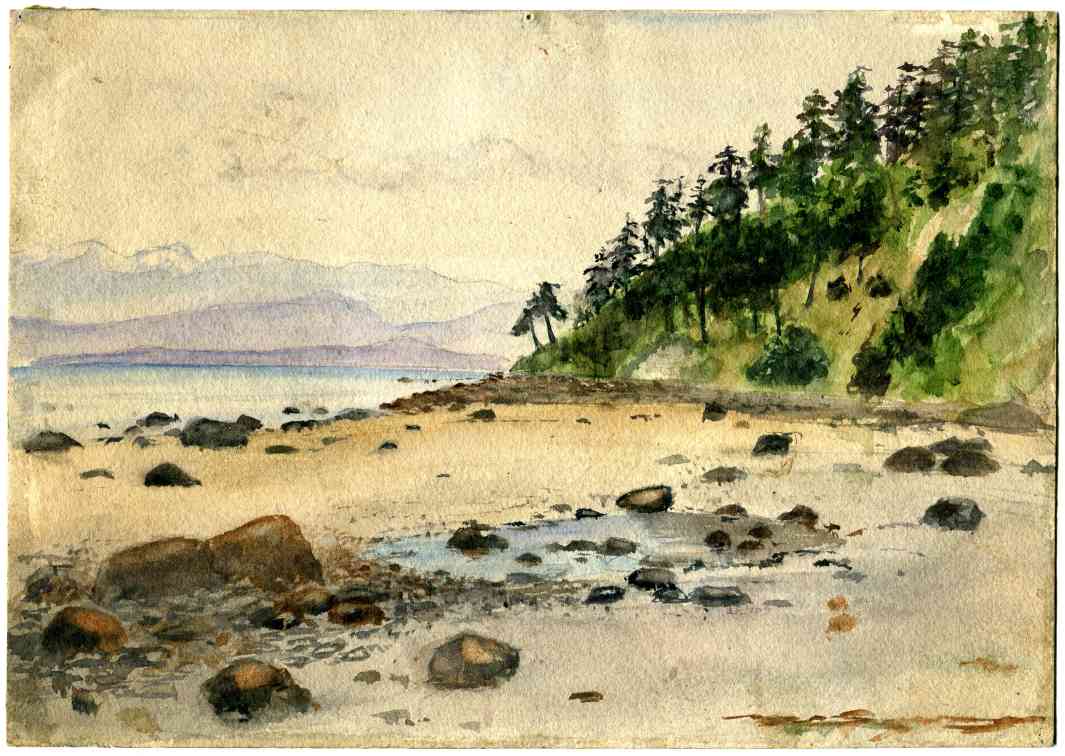
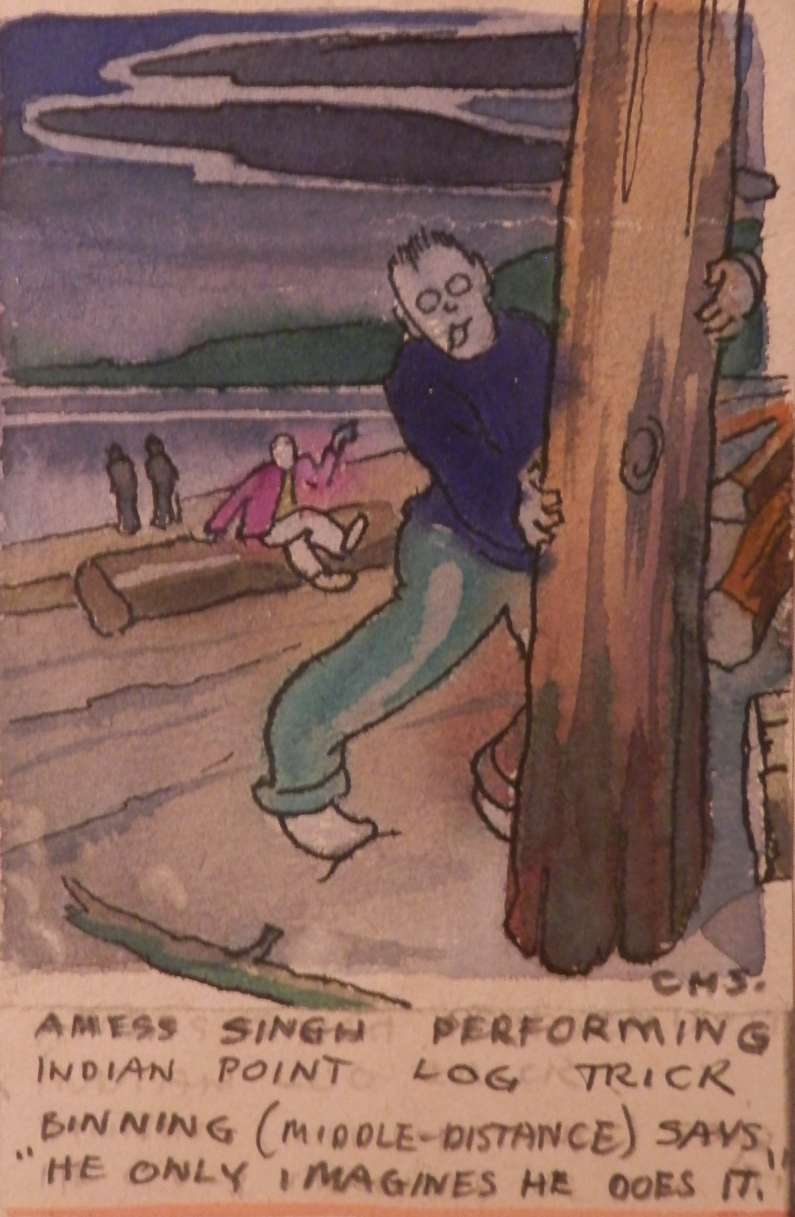
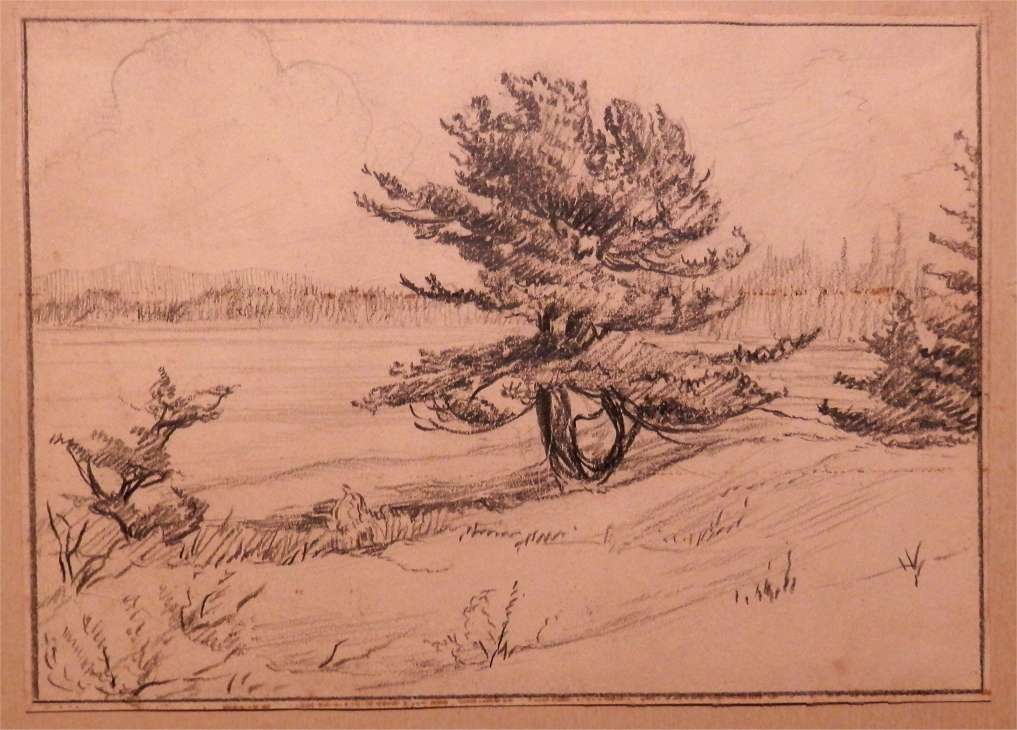
MUSEUM AND ART NOTES, Vol. VI, No. 1
March 1931; 42 pages, illustrated black and white
Published by the Art, Historical and Scientific
Association of Vancouver
Includes article by R.S. Sherman on
Savary Island
Pen & ink illustration by Maud Rees Sherman on page 12.
SPILSBURY'S COAST - Pioneer Years in the Wet West, by Howard White & Jim Spilsbury
1987, Harbour Publishing Co. Ltd.; ISBN 0-920080-57-X
Reminiscences of the west coast, including Savary Island
SPILSBURY'S ALBUM - Photographs and Reminiscences of the B.C. Coast,
by Jim Spilsbury
1990, 176 pages; Harbour Publishing Co. Ltd.; ISBN 1-55017-034-1
Photos, paintings, and reminiscences of the west coast, including Savary Island
SUNNY SANDY SAVARY: A History of Savary Island 1792-1992 by
Ian Kennedy
1992, Kennell Publishing, Vancouver; ISBN 0-9696291-0-9
188 pages, paperback, illustrated black & white; index, bibliography
Includes references to Maud Sherman,
R.S. Sherman, the
Herchmer family,
Frankie Keefer, Helen Griffin,
visiting artists, art school students & staff.
MAGNETIC ISLE - Gladys Bloomfield's Savary
2005; ISBN 0-9739209-0-4; 146 pages, illustrated in black and white
Edited by Conde Landale; published by Savary Island Heritage Society
Includes references to R.S. Sherman,
Maud Rees Sherman, Laurencia
Herchmer.
HELEN GRIFFIN'S SAVARY ISLAND
2010, Savary Island Heritage Society/Tony Griffin, Vancouver, BC
Editor Tony Griffin, ISBN 978-0-9739209-1-8 (n.p.)
2 ltd. ed. coil-bound volumes in slipcase, illust. colour/b&w
"A selection of sketches, paintings and notes from her time on the island, 1947 - 1983."
SAVARY REFLECTIONS - Twenty-six Islanders Share Memories
2020, Savary Island Heritage Society, Whonnock BC
Editor Ruth White, ISBN 978-0-9739209-2-5
134 pages, paperback, illustrated colour and black & white, includes index
A nice collection of stories, memories, and family photos depicting many years of
happy summer living on the island.
"May 19, 1913. Then there was the hard winter. A good many tugs were wrecked,
the Rosine was a total loss, the Cheslakee sank but is in the docks now being
repaired. The Cheslakee was always a little too high for her length but it
wasn't enough to hurt. The way it happened was she was going up on her regular
trip, and just when she was in the middle of the passage between Powel River
and Van Anda she got into such a heavy sea that they put back to Van Anda.
She always tipped a little in making a turn but this was nothing if they
hadn't left the ports open. But the ports had been left open so she heeled
over to port, she couldn't go to starboard her usual direction when listing
on account of the wharf so heeled to port and went down on her beam ends
and sank. My stateroom the last time we went up on the Cheslakee was on the
port side and would be the first to fill. Two girls where drowned in papa's
and mama's. While she was being repaired a great big boat the Chelhosin of the
outer passage was put on. We went up on her at Easter. Shes almost exactly the
same as the Camosun same size and everything she's a beauty. It was kind of
rough going up but you'd never notice it, that boat slid through the waves as
though she didn't know they were there. She looked splendid with her big black
hull and long rows of cabin windows. They kept her clean too with white decks
and shining brass. When she hit Savary Island wharf she broke two or three piles.
Its a monstrous wharf too. If it had been a small one it would have collapsed like
a lot of shavings. We came back on the Cowichan another big boat. On her I
experienced the first and and I hope last experiment of standing against the funnel
of a big steamer when whistling. We have a summer hotel on the Island now also a
post office is to be opened on the Twenty Fourth. Papa's postmaster."
From "The Diary of Maud Rees Sherman 1907 - 1915" (private collection)
"June 4 1913. We go to Savary on the twenty eighth of this month. We are
going on the old Cassiar. It will be nice going on her again. My only objection is
that she is too slow. Mama doesn't want to go on her but papa says it will either
be the Cassiar or Cheakamus (Cheslakee) and mama absolutely refuses to go on a boat
that has once been down to the bottom of the sea. The Cheakamus is safer than the
Cassiar though. The Cassiar is nearly as old as Vancouver, and Vancouver is
twenty-seven years old. Then whenever she gets a fresh hole in her bottom they
fill it up with cement. So by now she is nearly all cement. We have been having
fine hot weather lately. My I wish I was at Savary."
From "The Diary of Maud Rees Sherman 1907 - 1915" (private collection)
"Nursing Sister Beatrice McNair of Vancouver is enjoying a very
well-deserved rest at the cottage of her sister, Mrs. J.L. Turnbull.
Miss McNair was one of the first nurses to leave for the front where
she has had some thrilling and interesting experiences. Besides being
torpedeoed on board ship and bombed in hospital, she arrived in
Paris on leave the very day "Big Bertha" first started operations.
Miss McNair was decorated by King George for conspicuous
bravery under fire."
From "Savary Island"
Vancouver Province, September 5, 1919
"Savary Island, nearly 100 miles from Vancouver,
discovered and named by Captain George Vancouver in 1792, though well known
as a seaside resort, may be said to have been rediscovered, artistically
speaking, during the past two weeks by half a hundred or more
artists from the city which bears the great explorer's name. (continues)"
from B.C. ARTISTS DISCOVER SAVARY ISLAND, by Noel Robinson
Vancouver Province, June 30 1933 page 41
"Students of the Vancouver School of Art have returned from
their summer school outing at the Royal Savary Hotel, Savary Island,
where they have spent ten days painting and sketching the glorious scenery. (continues)"
From "Art Students Hold Display of Summer Work"
Vancouver Province, July 4 1933
"This year Charles H. Scott,
director of the Vancouver Art School, has chosen Savary
Island for the third annual summer session, and pupils will leave June 9,
returning to Vancouver on June 20. Savary Island lies eighty-five miles northwest from
Vancouver and has the reputation of being "a South Sea Island set in the Gulf
of Georgia." Accommodation has been secured at Royal Savary Hotel and every
facility is offered for indoor and outdoor recreations. Special arrangements
have been made for small costs for the ten days' camp, Mr. Scott states, but
accommodation is limited."
From "In The Domain of Art"
Vancouver Province, May 5 1934